Tbilisi SPP #12 Field Notes (Night)
July 24th, 2025, Rike Park, Tbilisi, Georgia
Duration: 2 1/2 hours, 8p to 10:30p from meeting place, warmup, and end.
Players: 8 performers, 2 camera people (2 performers alternated as video people)
Adam Koan (USA)
Yoshika Inotani (JP)
Tayna (RU) (alternating video)
Larisa Chernaia (RU)
Polina Lapteva (RU)
Oleg Nikolaev (RU)
Naty Parfy (RU)
Nikita Baskov (RU)
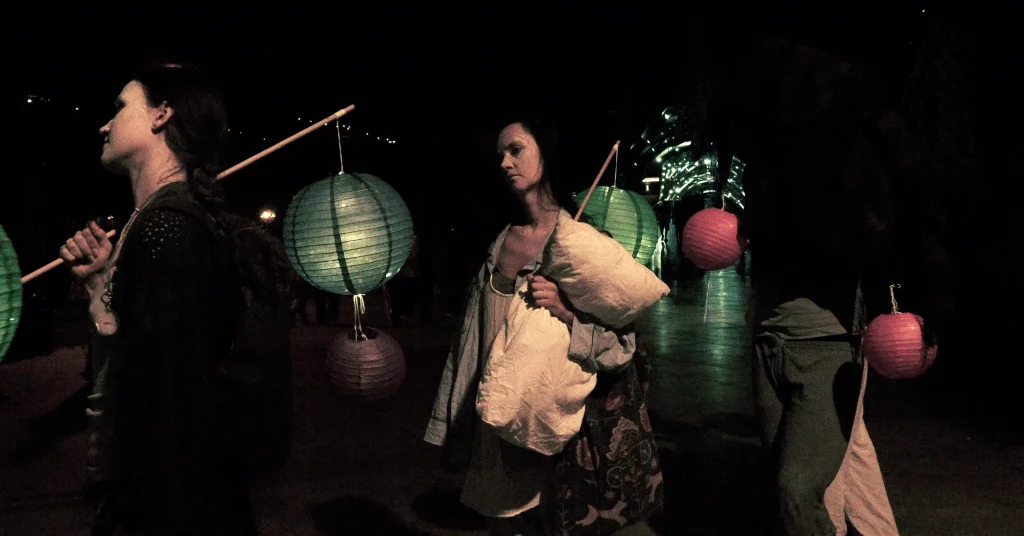
The SPP (Spontaneous Performance Procession) is a happening where dancers process around a given terrain for a set time and break out into mini body-based performances based on site-specific resonance. For detailed info on the SPP, see here.
Since each SPP aims to explore something a little different, we decided to try a nighttime version. The theme centered around bedtime and sleep, so our costumes were pajamas paired with white body paint. For props, we used paper globe lanterns, and for the setting, a most tourist-heavy spot—Rike Park.
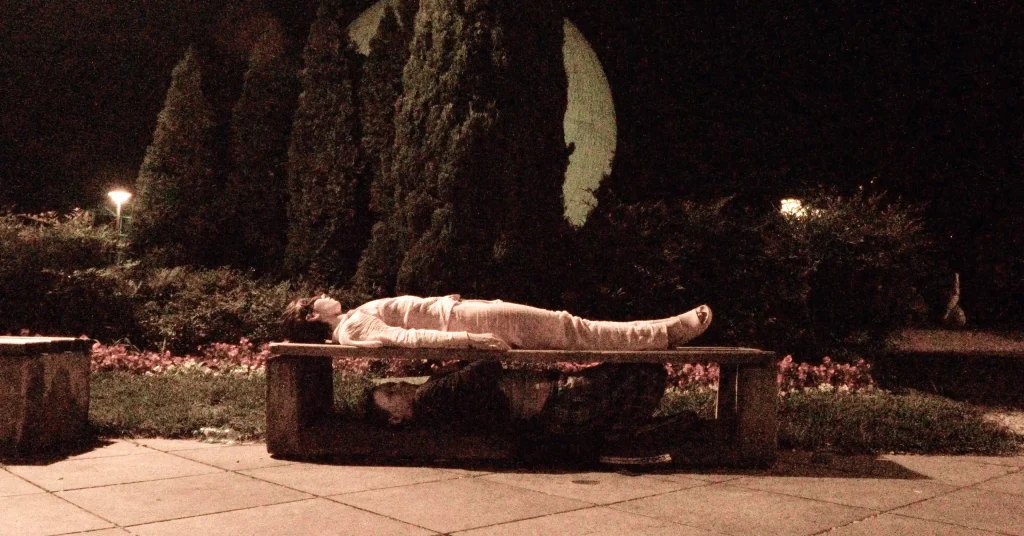
Of all the SPPs, this one to me proved to be the most challenging and so it provoked in me a decent amount of constructive criticism. That said, no SPP is ever truly a lost cause as long as we see it through to the end. The ability to reflect on our experience holds much value for me, and even if for no other reason, that alone makes the entire endeavor worthwhile. Each SPP offers new experiences and insights that become valuable lessons for carrying these processions forward in the future.

What didn’t work
Distractions were plenty, lighting was insufficient, and the boldness of the concept seemed to have overshadowed its execution.
Starting with the distractions: being in a popular tourist area, there was already a large scale of attention directed toward the surroundings. This was a carefully curated leisure space designed to be experienced exactly as the architects intended—and the presence of live Georgian music added to it. Within such a context, to me, our standalone happening struggled to hold ground, easily slipping into the background amidst the noise, curated ambiance, and activity. This made it difficult to fully inhabit the moment; our sense of presence felt diminished, which in turn impacted the creativity and performativity we could bring to it.
This is a common challenge with SPPs—when the environment overpowers the concept or task at hand. Still, there’s always a way to find resonance with a space; it’s part of the dancer’s work. That said, achieving this becomes significantly more difficult in a group.
Challenging lighting may have also contributed to the struggle, and from a documentation standpoint, it was a disaster—my camera couldn’t capture the performance properly, and I eventually had to switch to using the phone camera.
Perhaps I was alone in feeling a disconnect between the buildup and the actual execution. To put it more dramatically, it’s like the quiet dread some people experience before a birthday or holiday like Christmas—where anticipation builds, expectations grow, and yet the event itself feels unexpectedly underwhelming. Still, this experience is worth exploring, as it touches on what Subbody refers to as “kan qualia”—the sensation of encountering something difficult to resonate with. When a “flower of kan” appears, it means that this very difficulty has been transformed into a new creation. It’s a valuable concept to reflect on.
Just as the environment can dominate a performance, so too can a costume or prop. It’s easy to let these elements carry the weight of expression simply by their presence. The danger lies in relying entirely on the costume or prop, allowing it to overshadow the body and, in doing so, losing the depth of embodied expression and resonance in general.
Part of what revealed the difficulty in this SPP was the level of repetition—the same locations were revisited, and the same performative actions recurred throughout the procession. At Subbody, it was constantly emphasized: always bring novelty, never repeat! It’s a valuable reminder not to get too comfortable. The “world change” is at the heart of improvisation, and there should always be some sense of progression—Jo-Ha-Kyu—especially in the breakout moments of performance.
Getting familiar with the concept of Jumping Wild is an excellent exercise in being able to engage in world changes.
What worked
There were a few moments when the floating globes collectively became something, shifting into another world such as when the globes huddled around a center or walked along the ground.
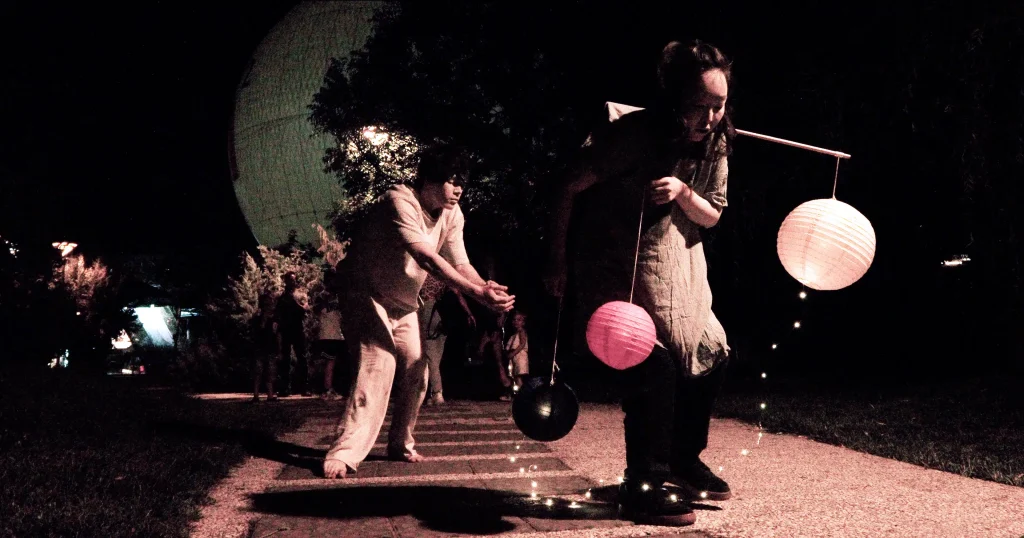
When the audience resonates with us or feels moved to join in, even briefly, it’s always a meaningful moment for me. Three instances stand out: a Muslim woman mimicked our movements as she found herself at the front of the procession; a group of teenagers followed behind, echoing our motions as we leapt from ledge to ledge; and at the playground, a child spontaneously joined in during a breakout performance. These moments raise an important question—how might we more intentionally invite or express openness to audience participation in future works?
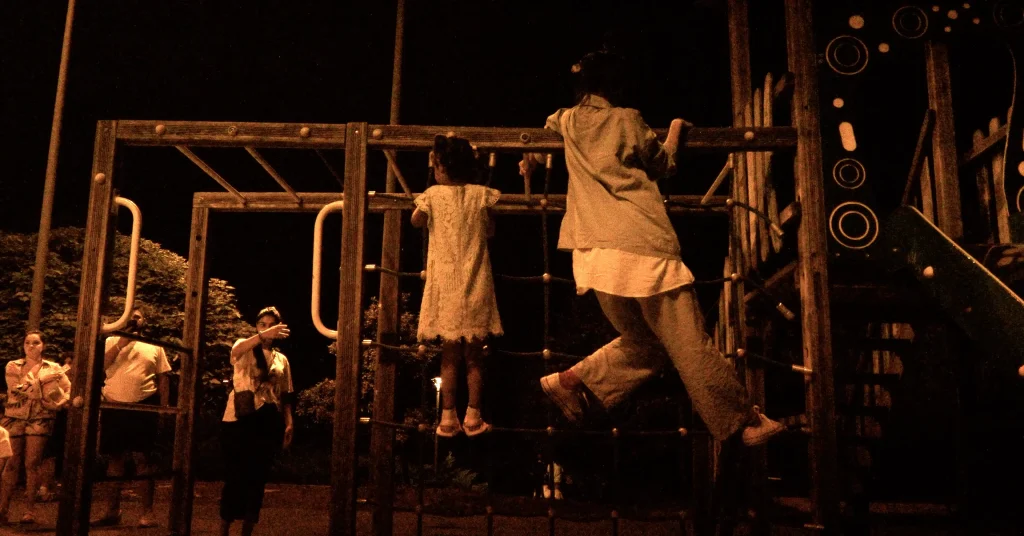
The ending space of the SPP was what I’d describe as a “peacock” ending space (see phone still below). In Hijikata’s terms, a “peacock” simply signified surprise—based on the story of him unexpectedly encountering a peacock at a friend’s house. (Intriguingly, at the entrance into the park before we had engaged in the performance, there was a man on the bridge with two peacock pets.) One Subbody colleague even seemed to build much of his performance theory around this idea of sudden, unexpected resonance. In that spirit, it felt especially fitting that we ended—perfectly timed—right at the large hot air balloon, offering a striking visual echo to our paper globes and bringing the piece to a resonant close.
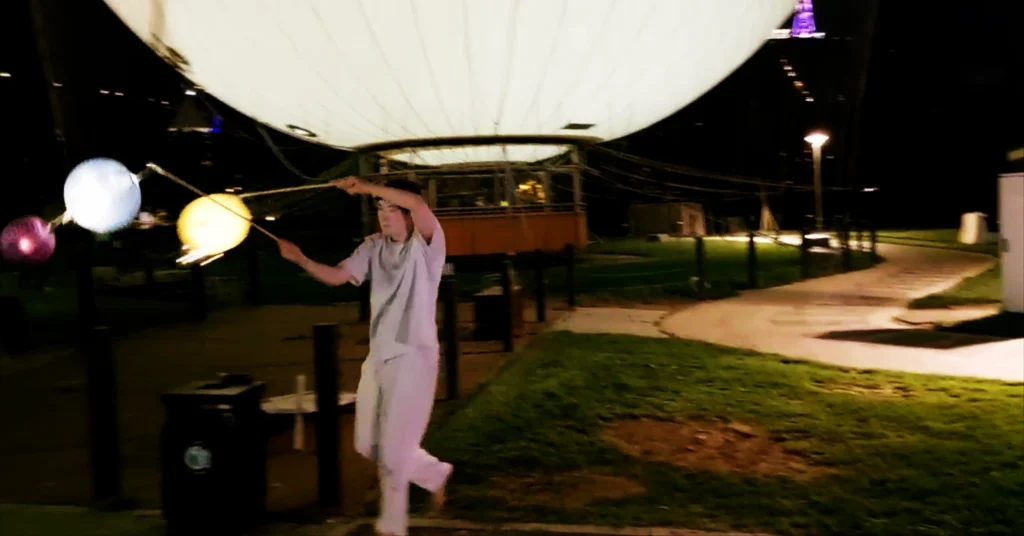
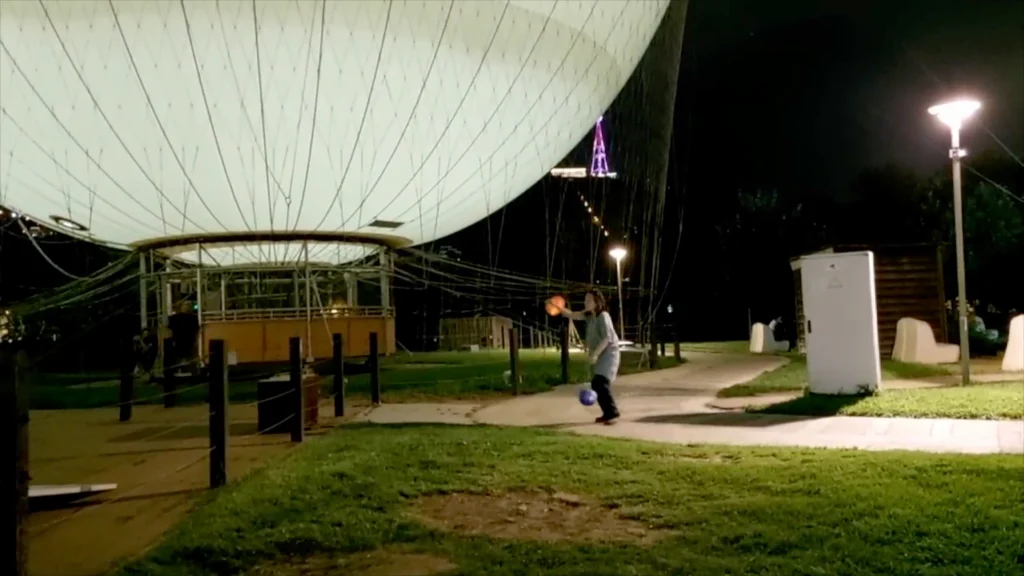
Future
We’ll be here till the 9th of September and plan on continuing more of these and then we’re off to Thailand. Everywhere we go, the idea is to continue these SPPs. They are a great way of experiencing a space with one’s whole body. It’s psychogeographical. Psychogeography is the exploration of environments through a subjective, emotional, and often playful lens, revealing how the place affects mood and behavior. Site-specific art and butoh go very well together with psychogeography.